 In any proportion the terms are in proportion by Composition and Division; that is, the sum of the first two terms is to their difference, as the sum of the last two terms is to their difference. In any proportion the terms are in proportion by Composition and Division; that is, the sum of the first two terms is to their difference, as the sum of the last two terms is to their difference.  Common School Algebra - Page 221by Thomas Sherwin - 1855 - 238 pagesFull view Common School Algebra - Page 221by Thomas Sherwin - 1855 - 238 pagesFull view - About this book
 | Thomas Sherwin - 1862 - 252 pages
...— d=b:d. Hence, by (vm), a-\-b : c-\-d=a — 6 : c — d, or by (v), a-\-b:a — b=.c-\-d: c — d. Comparing the last two proportions with the original...proportion (2) in (x), we might have obtained from it b-\-a:d-\-c=.b — a: d — c, and (xn). If, in any proportion, the antecedents are alike or equal,... | |
 | Thomas Sherwin - 1864 - 260 pages
...: a — 6 = c -\-d: c — d. Comparing the last two proportions with the original proportion a:b = c: d, we infer that, In any proportion, the sum of...proportion (2) in (x), we might have obtained from it b-\-a:d-\-c — b — a: d—c, and (xn). If, in any proportion, the dtttetedents are alike or equal,... | |
 | Benjamin Peirce - 1870 - 200 pages
...first two terms is to the difference of the last two in tht same ratio ; also the sum of the Jirst two terms is to their difference as the sum of the last two is to their difference. Proof. The proportion A: C = B : D; from which we obtain, by the preceding... | |
 | Benjamin Peirce - Geometry - 1873 - 202 pages
...and the difference o> the first two terms is to the difference of the last two in th» same ratio ; also the sum of the first two terms is to their difference as the sum of the laft two is to their difference Proof. The proportion • A : C = B : D ; from which we obtain, by... | |
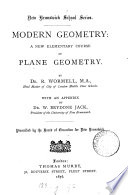 | Richard Wormell - 1876 - 268 pages
...and the difference of the first two terms is to the difference of the last two in the same ratio ; also the sum of the first two terms is to their difference as the sum of the last two is to their difference. Proof. — The proportion A: B = C : D gives, by transposing the means, A :... | |
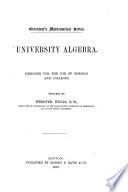 | Webster Wells - Algebra - 1879 - 468 pages
...will be in proportion by COMPOSITION AND DIVISION ; that is, the sum of the first two terms will be to their difference, as the sum of the last two terms is to their difference. Thus, if a : b = c : d ^ А , олт a + * o + d „4 by Art. 347, = (1) a/ c and, by Art. 348, a—... | |
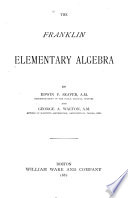 | Edwin Pliny Seaver, George Augustus Walton - Algebra - 1881 - 304 pages
...B : A -B = 0+ D : C- D. Comparing this with the given proportion, we learn that In any proportion, the sum of the first two terms is to their difference as the sum of the last two is to their difference. Apply this principle to the proportion 9:6 = 3:2, and test the result. 201.... | |
 | Webster Wells - 1885 - 368 pages
...— d:d. 301. In any proportion the terms are in proportion by Composition and Division ; that is, the sum of the first two terms is to their difference,...sum of the last two terms is to their difference. Let a : b = с : d. Then, by Art. 299, - = (1) a с And, by Art. 300, ^n* = ^L^. (2) Dividing (1) by... | |
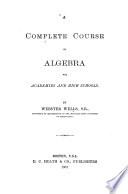 | Webster Wells - Algebra - 1885 - 372 pages
...— d:d. 301. In any proportion the terms are in proportion by Composition and Division ; that is, the sum of the first two terms is to their difference,...sum of the last two terms is to their difference. Let a : b = с : d. Then, by Art. 299, = (1) a с And, by Art. 300, £=± = c-^- (2) a Dividing (1)... | |
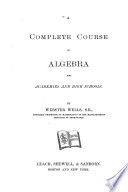 | Webster Wells - Algebra - 1885 - 370 pages
...c — d:d. 301. In any proportion the terms are in proportion by Composition and Division; that is, the sum of the first two terms is to their difference,...sum of the last two terms is to their difference. Let a : b — с : d. Then, by Art. 299, = m а с And, by Art. 300, i^ = c-^. (2) ac Dividing (1)... | |
| |